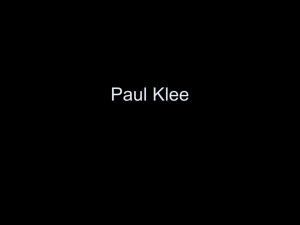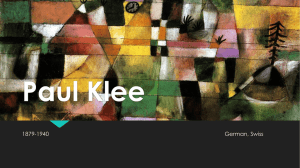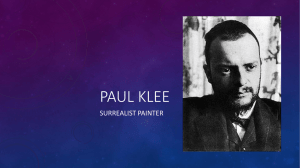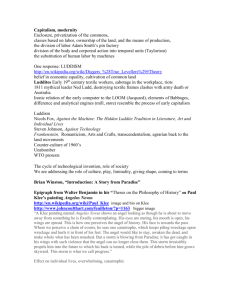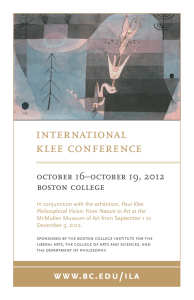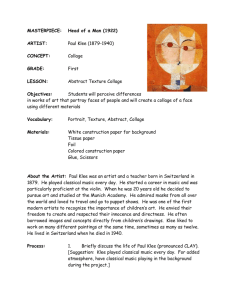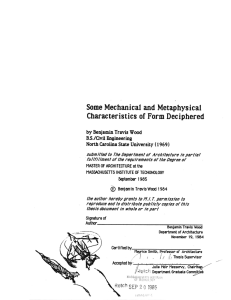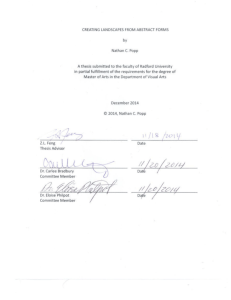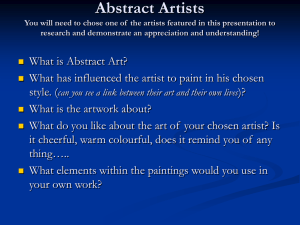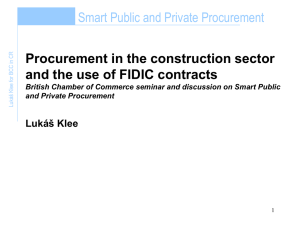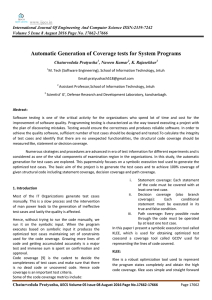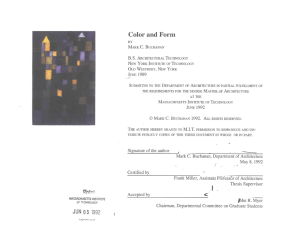Paul Klee & Creating with Crayon & Tissue Paper
advertisement
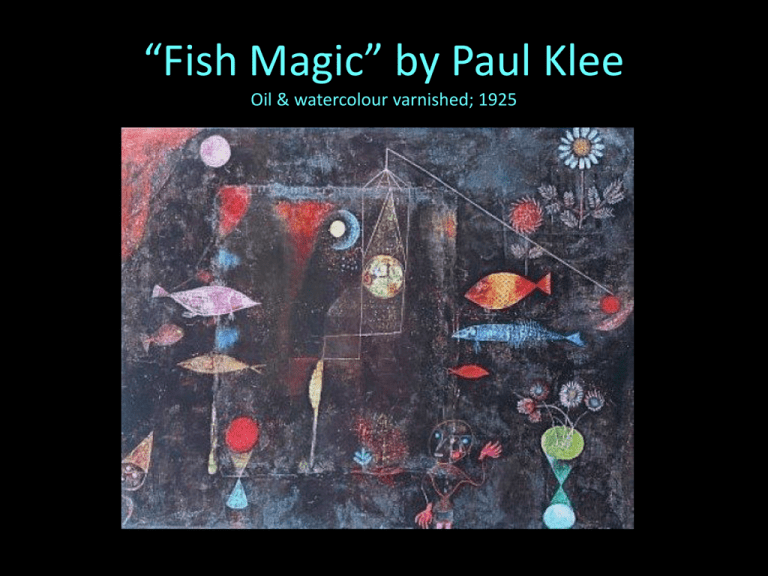
“Fish Magic” by Paul Klee Oil & watercolour varnished; 1925 Paul Klee • Born in Switzerland (1879-1940) • Paintings are difficult to classify (associated with Cubism, Expressionism, Surrealism & Abstraction) • Works were often small in size • Used geometric shapes, letters, numbers and arrows, and combined them with figures of animals and people • Included references to poetry, music and dreams; sometimes included words or musical notation • Worked in isolation from his peers, interpreting new art trends in his own way • Used a variety of media (oil, tempera, watercolour, ink, pastel, canvas, linen, burlap, cardboard…) • Taught at Bauhaus school of art, design & architecture; was an effective teacher of colour theory & colour mixing • Suffering from scleroderma, but encouraged by a visit from Picasso & Kandinsky, he created 1200 works in 1939 Iinfo retrieved May 2012 from http://en.wikipedia.org/wiki/Paul_Klee Works by Paul Klee Red Balloon; Oil on muslin; 1922 Fortress and Sun; date unknown Works by Paul Klee Around the Fish; Oil & Tempera; 1926 Highways & Byways; Oil on canvas; 1929 Works by Paul Klee After the Flood; 1936 Twittering Machine; Mixed Media; 1922 Underwater Fantasy Inspired by Paul Klee Images retrieved May 2012 from http://teachkidsart.blogspot.ca/ Underwater Fantasy Inspired by Paul Klee 1. Using a black crayon or oil pastel, draw an underwater scene on your paper . 2. Add some things that you wouldn't normally find underwater.... a clock, flowers, people, etc. 3. Lay some squares of "bleeding" art tissue on your paper; use paint brush to apply water on top of the tissue. 4. Repeat #3, covering as much or as little of your paper with color as you like. Use plenty of water so your tissue will "bleed"! 5. Set aside to dry. Image & Lesson retrieved May 2012 from http://teachkidsart.blogspot.ca/ Artist’s Clean-Up 1. 2. 3. 4. 5. 6. Artworks to drying space Wipe/dry hands & return all leftover tissue paper Recycle newspaper Wash brush and store properly (bristles up!) Wash hands Sketchbooks
